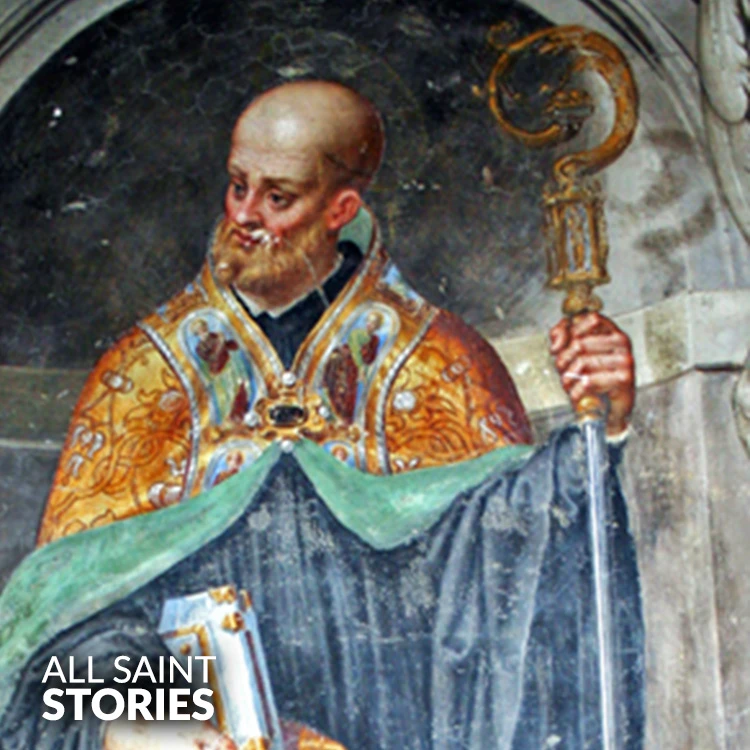O God, who called Saint Maurus from his youth to serve You in the way of Saint Benedict, grant that through his intercession we may be ever zealous in the spirit of prayer and service. Amen.
ST. MAURUS
ST. MAURUS

St. Maurus was a 6th-century disciple of St. Benedict of Nursia, known for his deep obedience and miraculous rescue of St. Placidus. He later founded Glanfeuil Abbey in France and spread the Benedictine monastic tradition.
St. Maurus, also known as Saint Maurus of Glanfeuil, was one of the earliest and most revered disciples of St. Benedict of Nursia, the founder of Western monasticism. Born around the year 512 in Rome, Maurus was offered as an oblate to Benedict at a young age—a practice where children were dedicated to monastic life by their families. Raised in the monastic environment of Subiaco, he quickly became one of Benedict's most devoted followers, demonstrating great piety, humility, and discipline.
One of the most famous legends associated with Maurus is the miraculous rescue of fellow monk St. Placidus. According to the "Dialogues" of St. Gregory the Great, Placidus had fallen into a lake, and Benedict instructed Maurus to rescue him. Maurus, obeying immediately, ran across the water to pull Placidus to safety. The miracle was interpreted as a testimony to Maurus’s obedience and the power of faith under the Benedictine rule. This story became central to Maurus’s hagiography and has been depicted in religious art and writings throughout the centuries.
After years of close service to Benedict, Maurus was sent to Gaul (modern-day France) to spread the monastic rule. There, he founded the Abbey of Glanfeuil on the banks of the Loire River and became its first abbot. This monastery is considered the first Benedictine foundation in Gaul, and it played a key role in spreading the Benedictine order across Western Europe. Maurus is credited not only with establishing the rule but also with organizing the monastic life of the community, setting a model that would influence countless other abbeys.
Though not much is documented about his later life, traditions hold that he continued his leadership at Glanfeuil until his death around 584. His relics became highly venerated in France, and devotion to him spread widely, particularly in the Middle Ages. Numerous miracles were attributed to his intercession, and his cult remained strong especially in France and Italy. His feast day is celebrated on January 15, and he is considered a patron of Benedictine monks and a model of monastic obedience and discipline.
St. Maurus was canonized before the formal canonization process (hence, “Pre-Congregation”), meaning he was recognized as a saint by popular acclaim and local ecclesiastical approval. Artistic representations often show him as a young monk, sometimes performing the miracle on the lake or holding a staff, symbolizing his role as abbot and spiritual leader.
His life continues to inspire devotion and reflection among those following the Rule of St. Benedict, and he is remembered as a shining example of obedience, service, and faith.
Video Not Found
The information on this website is compiled from various trusted sources. While we aim for accuracy, some details may be incomplete or contain discrepancies.
If you notice any errors or have additional information about this saint, please use the form on the left to share your suggestions. Your input helps us improve and maintain reliable content for everyone.
All submissions are reviewed carefully, and your personal details will remain confidential. Thank you for contributing to the accuracy and value of this resource.
Credits & Acknowledgments
- Anudina Visudhar (Malayalam) – Life of Saints for Everyday
by Msgr. Thomas Moothedan, M.A., D.D. - Saint Companions for Each Day
by A. J. M. Mausolfe & J. K. Mausolfe - US Catholic (Faith in Real Life) – Informational articles
- Wikipedia – General reference content and images
- Anastpaul.com – Saint images and reflections
- Pravachaka Sabdam (Malayalam) – Saint-related content and insights
We sincerely thank these authors and platforms for their valuable contributions. If we have unintentionally missed any attribution, please notify us, and we will make the correction promptly.
If you have any suggestion about ST. MAURUS
Your suggestion will help improve the information about this saint. Your details will not be disclosed anywhere.
© 2025 Copyright @ www.allsaintstories.com


 English
English
 Italian
Italian
 French
French
 Spanish
Spanish
 Malayalam
Malayalam
 Russian
Russian
 Korean
Korean
 Sinhala
Sinhala
 Japanese
Japanese
 Arabic
Arabic
 Portuguese
Portuguese
 Bantu
Bantu
 Greek
Greek
 German
German
 Dutch
Dutch
 Filipino
Filipino